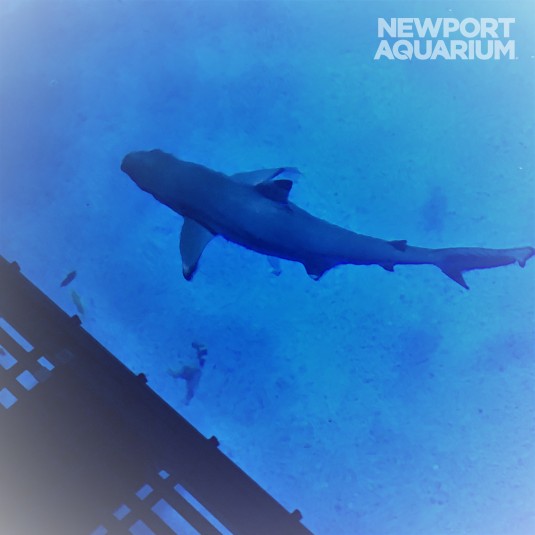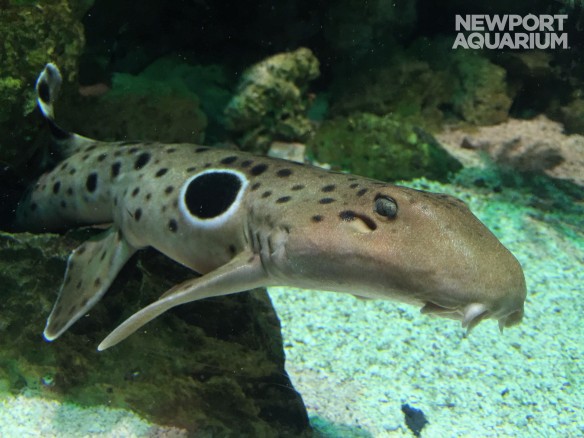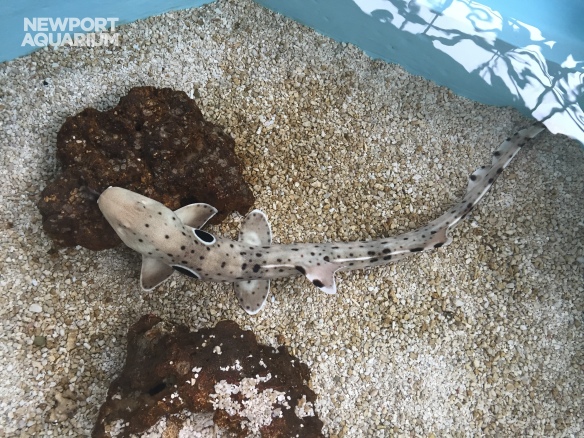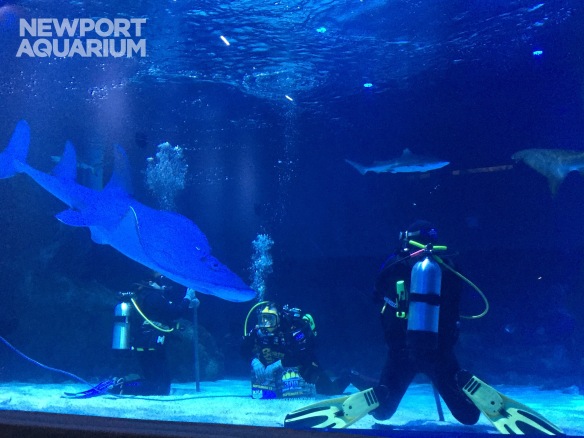Hello, my name is Sam and I am one of the aquatic biologists here at Newport Aquarium! If you are looking for me around the aquarium you will most likely find me behind the Dangerous and Deadly gallery or working in Shark Central. Working with aquatic animals, especially elasmobranchs (sharks and rays) is my passion and I am thankful every day that I have the opportunity to use my passion here! 
Fuji is one of our Japanese Bullhead Sharks in Shark Central. He came to us malnourished and not eating on his own. Scott Brehob, the biologist who took care of the sharks in Shark Central before me, developed a method of tube feeding him nutrient-packed slurry and Fuji started to gain weight and his health improved. I was able to use what Scott started to get Fuji eating solid foods with little assistance and I am excited to say that he is doing better than ever!

It’s breakfast time in Shark Central. I hand feed Fuji, one of our Japanese bullhead sharks.
One of my favorite parts about being a biologist is seeing the animals I take care of grow and show signs of improved health. A method I use to measure the growth of my animals is to periodically record weight and length. Here two other biologists, Matt and Jen, are helping me measure the length of Fuji. I am very fortunate to be part of such a supportive and helpful team of biologists here at the Aquarium!

Assistant Curator, Matt, and Senior Biologist, Jen, assist during our Shark Central checkups.
One way that I ensure my animals are getting proper nutrition is by feeding them a variety of food sources and supplementing their diets with vitamins.
Most animals will not just eat the vitamin tablet by itself, so I have to hide it in the food I feed them!
Another cool animal I get to take care of is an electric eel! If you notice I am using a plastic feeding stick because full grown electric eels, such as this one, have been known to produce electrical pulses of up to 700 volts! So when I work with him I have to be sure to use equipment that does not conduct electricity! 
This little guy is a porcupine pufferfish. He has one of the biggest personalities out of all of my animals. When I come up to his tank he will swim right up to the surface of the tank expecting food. If I am not feeding him that day he will actually spit water at me! I never realized that fish could have such different personalities until I started working with them on a regular basis!
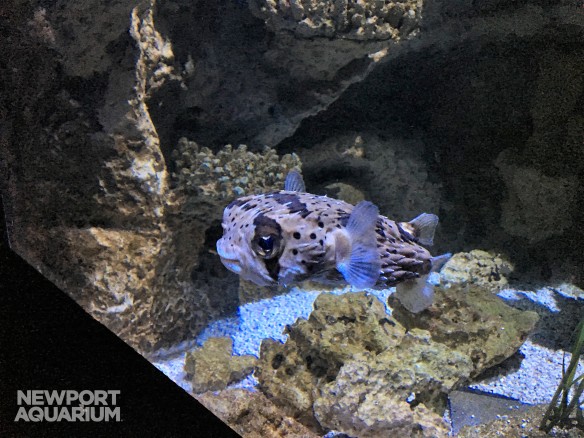
Meet this friendly pufferfish in our Dangerous & Deadly gallery.
Lionfish are as beautiful as they are dangerous. They have 18 venomous spines and so I have to be extra careful when I am cleaning their exhibit. While they are not a problem in their native Indo-Pacific habitat, they have become a destructive invasive species in the Caribbean Ocean and are a threat to many of the native fish.

Lionfish are beautiful and dangerous. They’re also an invasive species.
Although most people think piranhas are vicious, they are in fact quite docile when they are well-fed. They run in packs for safety, not strength. And, they aren’t apex predators—they’re prey. Piranhas will leave you alone if you leave them alone. They travel in “shoals” to protect the inner fish in the group from attacks. When they swim in groups like this, they tend to have a hierarchy of larger, older fish towards the center and younger fish on the outer edges.
Thanks for following me along on this #TakeoverTuesday. I grew up watching Steve Irwin and Jeff Corwin, and they inspired my dream and passion to be a biologist at an Aquarium. I absolutely love working at Newport Aquarium and I can honestly say that I have started my dream career here!
Thanks for following me along on this #TakeoverTuesday. I grew up watching Steve Irwin and Jeff Corwin, and they inspired my dream and passion to be a biologist at an Aquarium. I absolutely love working at Newport Aquarium and I can honestly say that I have started my dream career here!

 New Baby Shark
New Baby Shark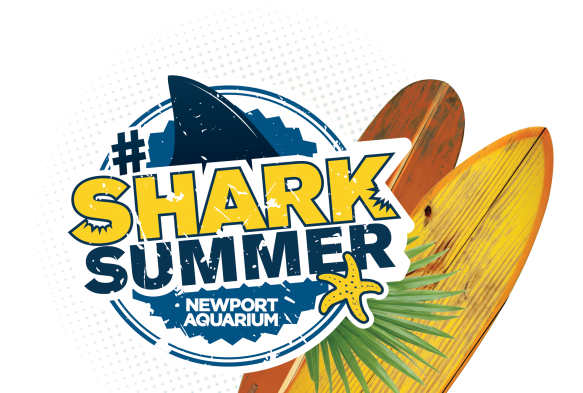







 The catshark is actually in the process of laying her eggs, which come out in twos. When they lay eggs you will notice that there are curly tendrils on each end of the pouch, known as a “mermaid purse”. The tendrils assist in anchoring the egg which secures it to the ocean floor.
The catshark is actually in the process of laying her eggs, which come out in twos. When they lay eggs you will notice that there are curly tendrils on each end of the pouch, known as a “mermaid purse”. The tendrils assist in anchoring the egg which secures it to the ocean floor.









